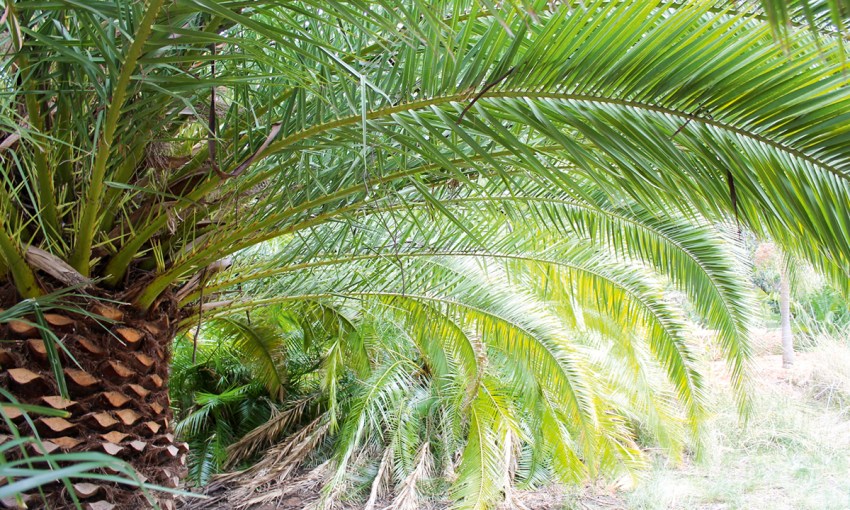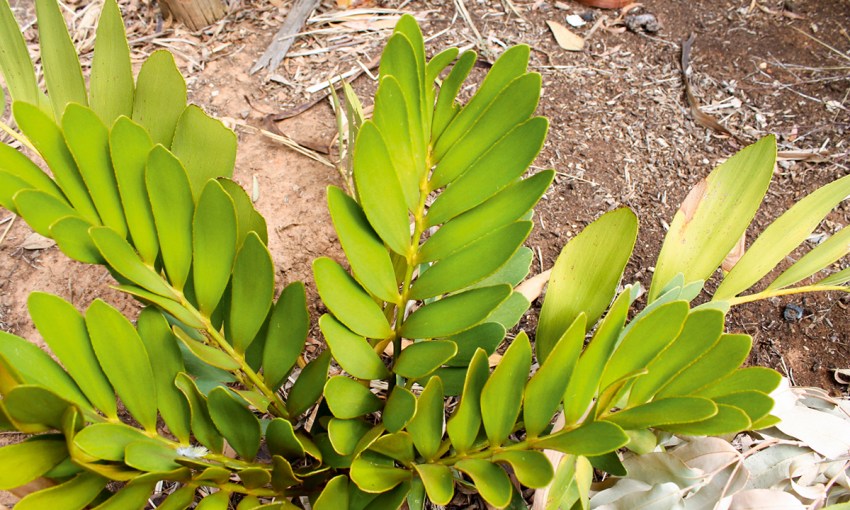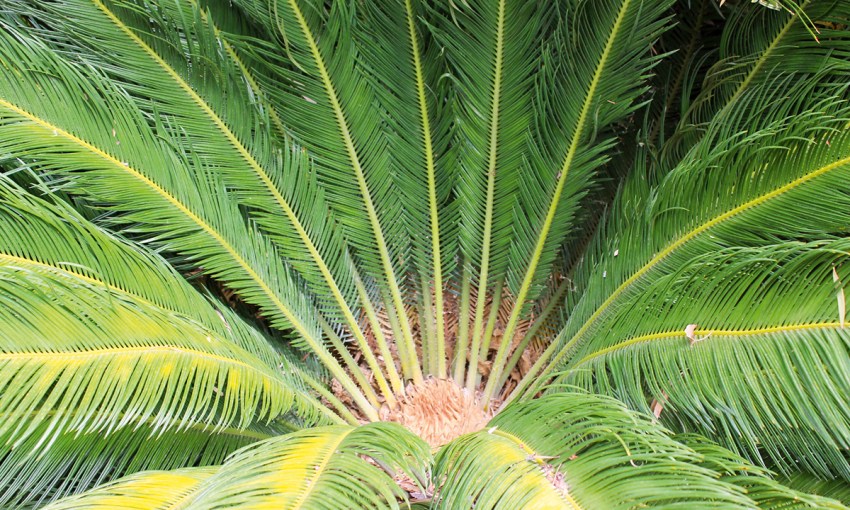With the right advice and suitable varieties, growing palms and cycads in South Australia can be very rewarding.
In the garden: The crowning glory of palms
While the majority of palms native to Australia grow on the east coast and in Northern Queensland, there are a number of non-native varieties that are well suited to our South Australian Mediterranean-style climate.
Max Bawden, president of the Palm and Cycad Society of South Australia says that palms come from a range of habitats, from deserts to quite cold places. “South Australia doesn’t have any native palms, but a range of varieties work quite well in our climate.”
There is a range of benefits to growing palms in SA, but these benefits are sometimes met with controversy. “People tend to assume that palms are only good for the coast or they picture huge date and wine palms like those in the Barossa region,” says Lorraine Poole of palm specialists Jungle in Willunga.
Palm trees are often considered an exotic feature plant that cannot be grown with floral plants. In reality, Lorraine says, “palms cohabit well with just about anything and the root systems of smaller palms are non-invasive, making them perfect for confined spaces”.

“In addition, palms are some of the most effective carbon neutralises and their erect structures and spectacular crowns provide constant shade and can be very effective for cooling your backyard during fierce SA summers,” says Max.
Palm care is relatively straightforward. A common misunderstanding of palm-growing in urban areas is the upkeep: people think palms drop leaves all the time. “This simply isn’t the case,” says Max. “Palms drop one large frond every few months, which is far easier to take care of than eucalypts, for example, which drop numerous, small leaves all year round.”
While varieties such as the Washingtonia and Phoenix Canary are especially suited to and prolific in SA, their root balls can grow two to three metres in diameter, rendering them too big for a backyard. There are, however, plenty of options for prospective palm growers.
Growing palms in SA
Many of the palm varieties suitable for SA are native to Southeast and Central Asia, and South America. When growing them in your backyard, you want to be sure you haven’t chosen a variety that is too spikey; many of the date palms have thorns making them unpopular for backyards.
Preparing your garden for a palm tree is relatively simple. Lorraine recommends fertilising the soil directly prior to planting with a mix of organic fertiliser, mushroom or manure compost and plenty of water to ensure your soil is moist. Once planted, keep the soil around your palm moist but well-drained throughout summer.

Palms for smaller gardens
Bangalow palm – A very popular fast-growing, self-cleaning palm, native to the east Australian coast.
Dwarf state palm – A slow-growing palm with a maximum height of three metres and crown of one-and-a-half metres. Very adaptable to full sun and windy conditions. Lower trunks can have spines.
Triangle palm – Not too tall, slow-growing, beautiful silver-grey foliage and very resilient.
Chinese fan palm – Suitable for dryer conditions, can be kept small. Very large, bright green leaves, prefers a shady situation and is slow-growing.
Chinese windmill palm – One of the hardiest palm varieties, great for beginners, can grow to seven metres high and three metres wide, but the root ball can be trimmed to slow growth.
Sabal minor palm – Small, highly versatile palm, tolerates wet to moderately-dry soil, fronds grow larger in direct sunlight.
Fishtail palm – Unique, bright-green pinnate leaves, suitable for Mediterranean climates and/or higher altitudes. Fast-growing, requires consistently moist soil.
Palms for bigger gardens
Cotton palm – Fan-like fronds, can grow 15 to 20 metres high, fronds need manual removal.
Phoenix canary palm – Highly adaptable, slow-growing, suitable for Mediterranean climates, but can be invasive.
Wine palm – Very well-suited to our Mediterranean climate, prefer dry weather when cold, named after the sweet fruit which can be fermented.

Suitable indoor palms
Lady palm – Slow-growing, tolerates low light, luscious, dense foliage, very resilient.
Parlour palm – Fast-growing, adaptable to smaller or larger pots, affordable, luscious foliage.
Kentia palm – Requires less sunlight, good drainage and has a pleasant, tropical aesthetic.
Nicolai – Commonly known as the Bird of Paradise. Broad, dark-green fronds, beautiful, year-round blooms, growth can be inhibited in a small pot.
Cycads suitable for SA
Cycads are commonly mistaken for palms, but they are actually an entirely separate taxonomy. They are fantastic for suburban locations, all varieties are slow-growing and make great feature plants with their evergreen, dramatic foliage and female cone flowers.
Chinese sago – Commonly mistaken for sago palms, these cycads prefer sub-tropical climates. Very tough, very slow-growing and love full sun.
Mexican cardboard cycad – Less spikey than other cycad varieties, easy to maintain, prefers a partly shady situation.
Burrawang – Native to inland Queensland, these cycads prefer dappled shade. With shiny green leaves they’re a fantastic feature plant, but harder to source.
Useful online resources
Palms online: palmsonline.com.au
Palm and Cycad Society: pacsoa.org.au
Useful books
Palms in Australia by David Jones
Cycads of the World by David Jones
Palms of the World by Jas McCurrach
Genera Palmarum by John Dransfield
Specialist palm nurseries in South Australia
Jungle in Willunga, Willunga
Palm Plantation, Cavan
This story first appeared in the Winter 2018 issue of SALIFE Gardens and Outdoor Living magazine.



